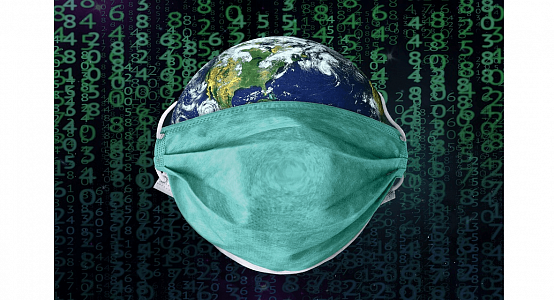The last time the category was named the top global risk in terms of impact was in 2006. Infectious diseases pose the biggest livelihood and economic threat as witnessed during the novel coronavirus disease (COVID-19) pandemic, according to the Global Risks Report, 2021 released virtually by WEF on January 19.
The category was ranked tenth in the previous report, which said extreme weather and failure of climate change mitigation and adaptation would be the most damaging for the planet over the next 10 years.
As of January 20, over 94 million people were infected and 2.06 million people died due to COVID-19, according to the Health World Organisation (WHO).
While it has been the worst-ever health crisis faced by the world, it held back the economic development in some of the poorest parts of the world. As a result, the existing economic gap between the rich and poor in the world has widened.
The human and economic costs of COVID-19 are severe and hence, infectious diseases are an immediate threat faced by the world at least for the next two years, cautioned the report.
At the same time, all the countries diverted their resources from other health challenges. For example, vaccination programmes across the world were disrupted and postponed.
Even before the pandemic, more than 13 million children were left out of all immunisation programmes and at least 20 million children below the age of one did not receive recommended doses against common preventable diseases, according to UNICEF.
The growing Covid infections impeded immunisation services in at least 68 countries, putting approximately 80 million children under the age of one at increased risk of contracting vaccine-preventable diseases, WHO estimated.
The WEF report arrived at these results on the basis of a Global Risks Perception Survey completed by over 650 members of the forum’s diverse leadership communities.
In the wake of COVID-19, the 16th edition of the WEF annual report added 12 new risks to the previous list.
They include the collapse of systemically important industries, social security systems or multilateral institutions, deteriorating mental health, mass youth disillusion, prolonged economic stagnation, fracturing international relations, a ‘pervasive backlash’ against science, digital inequality and the failure of technology governance.
The world’s youth will be severely affected by the pandemic, the report said. “Rising unemployment, widening digital divides and youth disillusionment can have severe consequences in an era of compounded economic, environmental, geopolitical and technological risks,” wrote Klaus Schwab, founder and executive chairman of WEF, in the preface.
Five of the top 10 global risks in terms of impact and likelihood remain from the environmental category.
Extreme weather is the top-most climate-related risk because of the failure of climate change mitigation and adaptation, flagged the report.
Human activities will degrade the environment and climate-related risks will be “an existential threat to humanity”, the report said. Carbon emissions due to human activities will rise in both developed and developing countries after the pandemic, it predicted.
As already projected by the World Bank, this report released a few days ahead of the DAVOS economic forum also warns of ‘debt crisis’ as the mid-term risk in the next five years.
Photo source: picture from an open source
